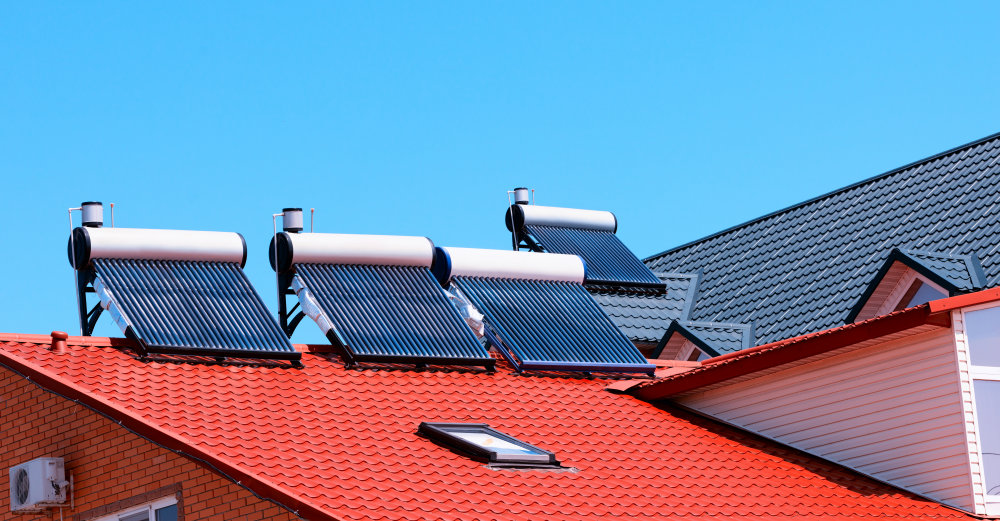Overview of the Energy Efficiency Market
Gauging the effect of energy efficiency efforts at large scale can be a complex task, especially so in countries as large as the United States. When assessing the overall impact of clean energy, it is easier to break down its effects by looking at its impact at state or even at city level, and also by examining the steps taken by leading corporations in the private sector. Many US cities and businesses have taken the initiative adopting energy efficient policies despite the direction taken by federal government. US cities and corporations are making commitments to partially or fully running their operations on clean energy, and their number is increasing year after year.
Energy Efficiency in Cities
Dozens of US cities have pledged to transition to clean energy sources. One of the most notable examples is Burlignton (Vermont), which meets 100 percent of its electricity demand from solar, wind, hydropower and biomass from scrap wood (1).

Other cities may not fully run on renewables, but have made important commitments to improving their energy efficiency by powering up to 70 percent of their grid using clean energy sources. This is the case of Aspen (Colorado) and Eugene (Oregon), whereas Seattle is very close to achieving 100 percent (2, 3). In this list we can also include the official commitments made by the mayors of Boulder, Atlanta, Rochester, Salt Lake City, San Jose, San Francisco, and San Diego (4).
US cities are also rated in terms of the overall energy efficiency of their infrastructure and energy use. Rankings often feature large cities along the East and West Coast, with the exception of a few non-coastal cities like Chicago, Denver, and Austin. It is interesting to note that the lists of most energy-efficient US cities are topped by some of the nation's largest and most densely populated urban centers, such as New York, Washington, and Los Angeles, proving size and population are no obstacle to large-scale action geared towards a better use of resources (5).
Although policies and initiatives vary from state to state, at city level, energy efficiency programs are mainly designed along the following main areas:
- Improving the total energy use of existing residential and commercial buildings
- Developing new building codes with a focus on reducing emissions and saving costs
- Using combined heat and power or co-generation technologies, as these can operate at energy-efficiency rates of up to 75 percent (6).
 Cities play a key role in climate change, since it is believed that almost 70 percent of all carbon emissions generated at global level come from urban centers. The importance and long-term impact of energy-efficient city planning cannot be underestimated given the role it plays in bringing prosperity by reducing unnecessary expenditures and improving the quality of life of residents (7).
Cities play a key role in climate change, since it is believed that almost 70 percent of all carbon emissions generated at global level come from urban centers. The importance and long-term impact of energy-efficient city planning cannot be underestimated given the role it plays in bringing prosperity by reducing unnecessary expenditures and improving the quality of life of residents (7).
Businesses and Energy Efficiency
Along with cities, the private sector is also leading the nation in the shift towards widespread energy efficiency. Environmental accountability has become an integral part of the corporate ethos of many of the US largest corporations, and actions in this area materialize either through compliance with international standards like ISO 50001, taking steps to offset corporate energy usage, or through the adoption of internal policies that focus on reducing consumption and / or minimizing the impact of business operations on the environment (8).
One of the most well-known leaders in operational sustainability is retail chain Whole Foods, one of the first to achieve a Grocery Stewardship Certification in several states and involved in energy efficiency programs since 2010 (9). Another well-known example is Microsoft, which uses a mix of wind, biomass, hydro and solar energy in many of its primary campuses, and has established smart energy use policies across the board, from employee travel to strict auditing and certification standards (10). Another approach is the one taken by Citi Bank, who is building a new range of products to help their clients achieve better energy efficiency (such as low cost energy-efficiency loans), and is making an ongoing effort to expand the energy efficiency market by investing in EE assets (11).
What Energy Efficiency Means to Cities, Residents, and Businesses
Efforts to build greener cities and businesses have both direct and indirect benefits for individuals, especially considering that by 2050 up to 70 percent of the world's population will be living in cities not to mention healthier too thanks to improved heating, cooling, and ventilation solutions and the addition of green and non-toxic energy sources. The same can be said about working environments, where things like better air quality and more natural light can help increase productivity and boost morale (12).
There are also economic benefits involved, as important household savings can be achieved  by just using Energy Star appliances, which have helped Americans save approximately $35 billion in energy bills in only one year and savings for commercial buildings also amount to billions of dollars. Moreover, investing in weatherization or home upgrades involving heating and cooling can reduce residential energy bills by 20 percent, as well as increase the overall value of a property (13).
by just using Energy Star appliances, which have helped Americans save approximately $35 billion in energy bills in only one year and savings for commercial buildings also amount to billions of dollars. Moreover, investing in weatherization or home upgrades involving heating and cooling can reduce residential energy bills by 20 percent, as well as increase the overall value of a property (13).
Green transportation options can also bring benefits to citizens and businesses, ranging from cheaper commutes, traffic congestion relief, and job creation in fields from green logistics to mass transit, resource management, and manufacturing (14, 15).
To sum up, reaping the full benefits of clean energy requires the integration of energy efficiency principles and practices into our everyday lives, from urban planning to the choices we make as consumers. A cleaner and greener economy can become the pillar of a new and sustainable economy where economic growth and improved quality of life are at the core.
Sources & Citations
This Energyboom article contains information and quotations from a variety of sources, including the following:- (1) https://www.fastcompany.com/3042029/how-burlington-vermont-became-the-first-city-in-the-us-to-run-on-100-renewable-electricity
- (2) https://e360.yale.edu/digest/number-of-cities-powered-mostly-by-renewables-has-doubled-since-2015
- (3) http://www.seattle.gov/light/greenest/cleanhydro.asp
- (4) http://www.go100percent.org/cms/index.php?id=18
- (5) https://live.tpctraining.com/blog/top-10-most-energy-efficient-cities-in-the-us
- (6) https://www.energy.gov/sites/prod/files/2021/06/f35/energy_efficiency_resources_fact_sheet_june2021.pdf
- (7) https://news.nationalgeographic.com/2021/03/city-consumption-greenhouse-gases-carbon-c40-spd/
- (8) http://www.bcse.org/wp-content/uploads/2021-Sustainable-Energy-in-America-Factbook-Brochure.pdf
- (9) https://media.wholefoodsmarket.com/news/whole-foods-market-commits-to-reduce-energy-consumption-by-25-percent-per-s
- (10) https://www.microsoft.com/en-us/environment/carbon/our-approach
- (11) https://www.citigroup.com/citi/news/2015/150615a.htm
- (12) https://www.nationalgeographic.com/environment/urban-expeditions/green-buildings/benefits-of-green-buildings-human-health-economics-environment/
- (13) https://www.energystar.gov/sites/default/files/asset/document/ES_factsheet_ByTheNumbers_171113.pdf
- (14) https://rpsc.energy.gov/energy-data-facts
- (15) https://www.scientificamerican.com/article/how-do-green-projects-create-jobs/








